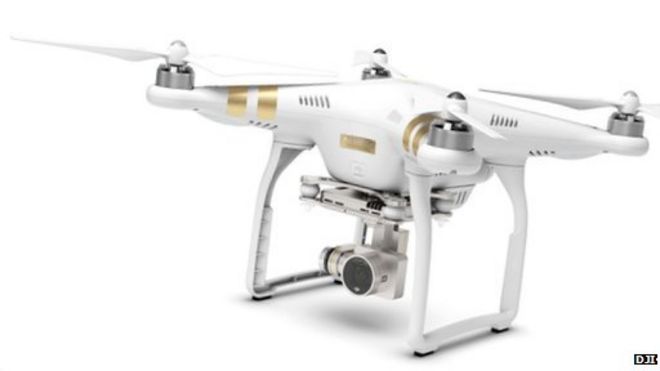
DJI has refreshed its family of drones with new models that are easier to take off and land.
The Phantom 3 quadcopters also gain the ability to hold their position without using a GPS location signal, making them more suitable for indoor use.
And the app that controls the camera-equipped machines has been updated to allow live video streams to YouTube.
However one expert suggested more should be done to protect the public from such remote-controlled aircraft.
China-based DJI is the bestselling brand of drones in what is a fast-growing sector, with hobbyists, farmers, film-makers and land surveyors among its customers.
The firm found itself at the centre of a security scare earlier this year when one of its previous models crashed into the lawn of the White House.
Live video feed
DJI has unveiled two versions of its latest aircraft, which offer different video recording capabilities.
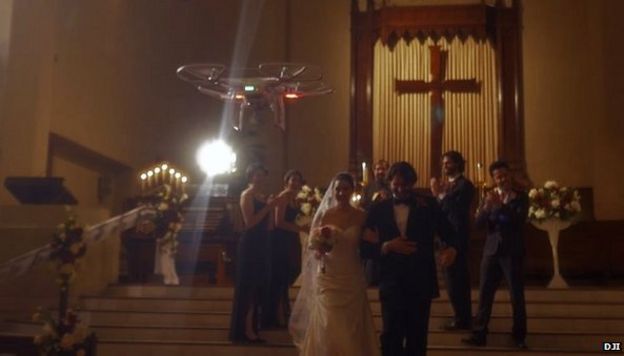
The Phantom 3 Professional, which costs $1,259 (£842), can shoot in 4K at 30 frames per second.
The ultra high definition format is four times the resolution of 1080p HD, which offers video-makers greater leeway to crop and pan across their footage after it has been shot.
The Phantom 3 Advanced, which costs $999 (£668), films at 1080p at 60 frames per second. This is lower resolution but better suited for slow-mo effects.
The lenses used by both aircraft are better suited for low-light conditions than earlier models. In addition, the new software allows owners to tag the best footage as it is recorded, making it easier to put together a fast edit.
DJI said that footage could be streamed to YouTube in 720p quality when the drone is up to one mile (1.6km) away from its controllers with almost no lag - a facility it suggested could make it a useful tool for journalists covering disasters and protests, and for mining and construction industry managers wanting to direct surveying efforts remotely.
DJI is also promoting the drone's ability to carry out indoor flights.
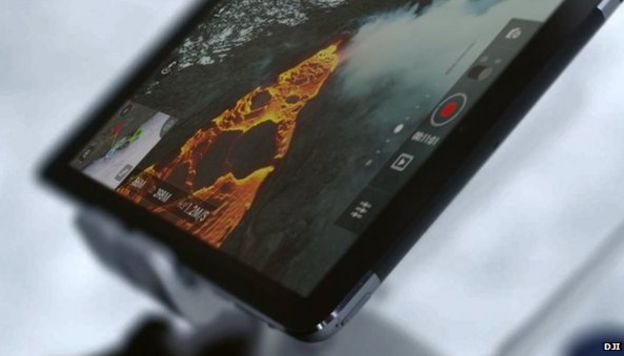
"The platform has a downward-facing camera that creates a 3D map of the ground underneath it in real-time, and identifies key vectors in that map and notices if there's any movement of those vectors," DJI spokesman Michael Perry told the BBC.
"So it automatically adjusts itself to hold a position.
"In addition, it's got two ultrasonic sensors that provide very accurate information about how far it is off the ground, which allows it to hover a lot more accurately, fly closer to the ground without having the platform bump up and down, and more importantly it lets you take off and land easily and securely with the touch of a button."
Drone injuries
DJI competes against Parrot, Walkera and Xinte among others, which all allow users to fit their aircraft with standalone cameras.
Rising sales of such devices have led to safety concerns.
In April 2014 an athlete said she suffered head injuries when a drone that had been filming her race in Australia fell to the ground.
And in December, a US newspaper photographer said the tip of her nose was "chipped off" after an accident involving drones flown inside a restaurant.
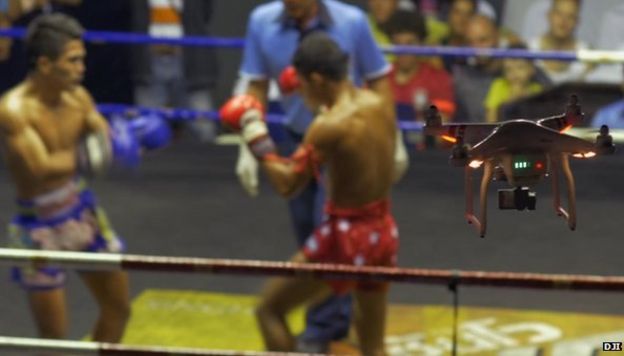
Following the accident at the White House in January, DJI updated the firmware used by its Phantom 2 drones to prevent them from flying over much of Washington DC.
The firm highlighted that it also continued to expand a wider list of no-fly zones, which is built into its latest models.
However, it suggested government watchdogs needed to offer clearer guidance.
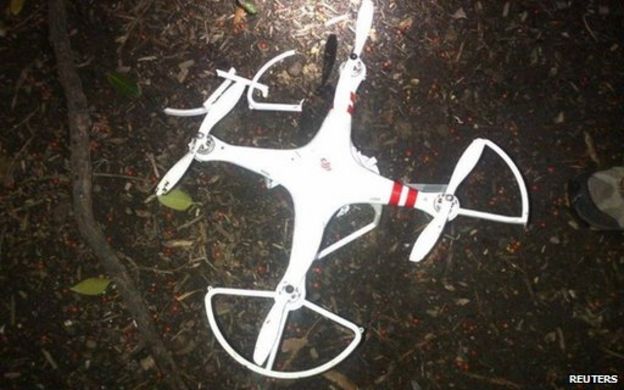
"We feel fundamentally that this industry will not reach its full potential until there is a clear and coherent regulatory framework put in place," said Mr Perry.
"I think the UK has taken some pretty significant strides - it has established a clear criteria for pilot qualifications, which are needed [alongside an approved request application] to be allowed to fly over a crowd or in a downtown area.
"But there is a patchwork of regulations around the globe, which only agree on one thing: flying near airports is dangerous."
Safer designs
Mr Perry noted that DJI drones sold in the UK were packaged with a pamphlet written by the Civil Aviation Authority, that sets out the restrictions under which they can be used.
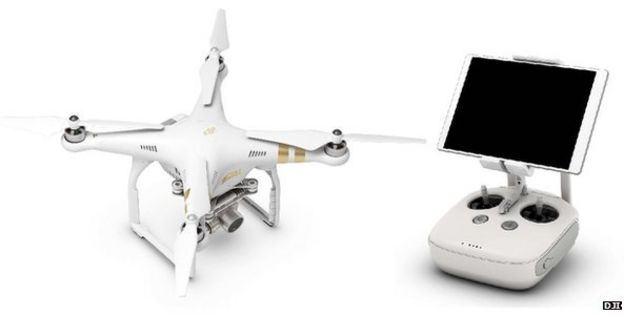
But one expert said the industry at large had a responsibility to do more.
"Recommendations are already being fed into the European Union to come up with a unified approach that will allow novel technologies and also protect people," said Dr Mirko Kovac, from Imperial College London's Aerial Robotics Lab.
"But the more hobbyists and other people that use drones, the harder it is to control.
"And what we need are more technological developments to ensure safety, particularly through the design of the aircraft as well as the sensors they use... to make the drones themselves inherently safe."

No comments:
Post a Comment